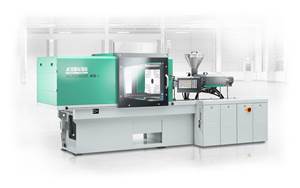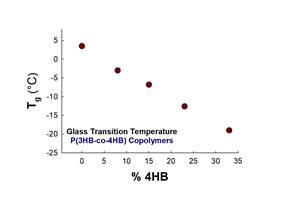Compounder Adds Capacity, Capabilities in Rochester
Enhancements to plant said to help compounder meet production and sustainability goals of customers.
Polymer Resources Ltd., a leading U.S. compounder of high-quality engineering resins with headquarters in Farmington, Conn., has completed the expansion and enhancement of its compounding facility in Rochester, N.Y. The company has significantly upgraded an existing building on its campus to support a 40% increase in overall compounding capacity.
The updated facility also features increased grinding and shredding capacity for recycling plastic waste to support circularity and sustainability. Furthermore, its spacious floorplan, new safety features and amenities are designed to provide a comfortable and efficient work environment for employees, whose numbers are expected to increase by double digits in the coming years.
“The expansion of our Rochester facility is strategic to the robust growth of our compounding capabilities and the expansion of our sustainability initiatives, both of which are increasingly important to customers,” said Scott Anderson, the company’s president and COO. “In addition to continuing to address customer requirements for scalable, reliable resin supply, short lead times and exceptional quality, the updated facility will help us advance sustainability through plastic waste collection and recycling. We are committed to helping our customers reach their production and sustainability goals, as well as meeting our own sustainability goals, and this new facility positions us to achieve those objectives.”

Polymer Resources has added grinding capacity at its upgraded plant in Rochester to support its own and its customers’ sustainability efforts. Photo: Polymer Resources
Greater Capacity for Compounding and Recycling
The project, which was completed in just over a year, expanded the footprint of the compounding facility from a total of 35,000 ft2, previously divided between two buildings, to 60,000 ft2 in one building. This change offers far more space for compounding and grinding operations, storage, a laboratory and offices, and it improves process efficiency and streamlines workflow. Further, the Rochester site offers Polymer Resources an opportunity to add on to the building — up to a total of 100,000 ft2 — in the future.
“We are committed to helping our customers reach their production and sustainability goals, as well as meeting our own sustainability goals.”
To boost compounding capacity, the company has installed a twin-screw extruder for faster throughput and advanced capabilities. This new equipment increases capacity by 40% and helps enable the efficient production of new and existing products.
A key feature of the facility is a separate, soundproofed, 3250 ft2 room for grinding and shredding post-industrial and post-consumer plastic waste for use in Polymer Resources’ sustainable resin grades. Not only does this grinding operation use material from both the Rochester and Farmington sites, but it also accepts parts and waste material from customers and vendors for recycling. This initiative helps to divert plastic from landfills and oceans and extend its useful life. Several end-use agreements between Polymer Resources and its customers are in place to ensure known, reliable sources of recycled content for the company’s sustainable materials portfolio.
Enhanced Work Environment
To maximize employee safety and comfort, Polymer Resources designed the facility with a powerful air filtration system, a dust collection system for the grinding operation and a modern break room. Greater space between machines also improves workers’ physical safety as they move around the production floor.
The Rochester plant compounds a wide range of engineering resins, from polyphenylene ether and polystyrene blends (PPX) to various grades of polycarbonate (PC), acrylonitrile-butadiene-styrene (ABS), polybutylene terephthalate (PBT), PC/ABS and PBT blends. Many of these grades are available unfilled or with different loadings of mineral or glass-fiber reinforcement.
The facility focuses on supplying large amounts of material, including full and partial truckloads (LTL volumes) to customers developing important applications for a variety of industries including the electrical, industrial, non-invasive medical, consumer goods, transportation, and building and construction sectors.
Related Content
How to Extrusion Blow Mold PHA/PLA Blends
You need to pay attention to the inherent characteristics of biopolymers PHA/PLA materials when setting process parameters to realize better and more consistent outcomes.
Read MoreCalculating an Injection Molding Machine’s Carbon Footprint
Arburg has utilized the ISO TS 1467:2018 standard, which determines the greenhouse gas emissions of a product, to help its customers calculate the product carbon footprint (PCF) of its injection molding machines.
Read MoreFilm Extrusion: Boost Mechanical Properties and Rate of Composting by Blending Amorphous PHA into PLA
A unique amorphous PHA has been shown to enhance the mechanical performance and accelerate the biodegradation of other compostable polymers PLA in blown film.
Read MoreHow to Optimize Injection Molding of PHA and PHA/PLA Blends
Here are processing guidelines aimed at both getting the PHA resin into the process without degrading it, and reducing residence time at melt temperatures.
Read MoreRead Next
Making the Circular Economy a Reality
Driven by brand owner demands and new worldwide legislation, the entire supply chain is working toward the shift to circularity, with some evidence the circular economy has already begun.
Read MoreBeyond Prototypes: 8 Ways the Plastics Industry Is Using 3D Printing
Plastics processors are finding applications for 3D printing around the plant and across the supply chain. Here are 8 examples to look for at NPE2024.
Read MoreLead the Conversation, Change the Conversation
Coverage of single-use plastics can be both misleading and demoralizing. Here are 10 tips for changing the perception of the plastics industry at your company and in your community.
Read More












 (2).jpg;maxWidth=300;quality=90)












